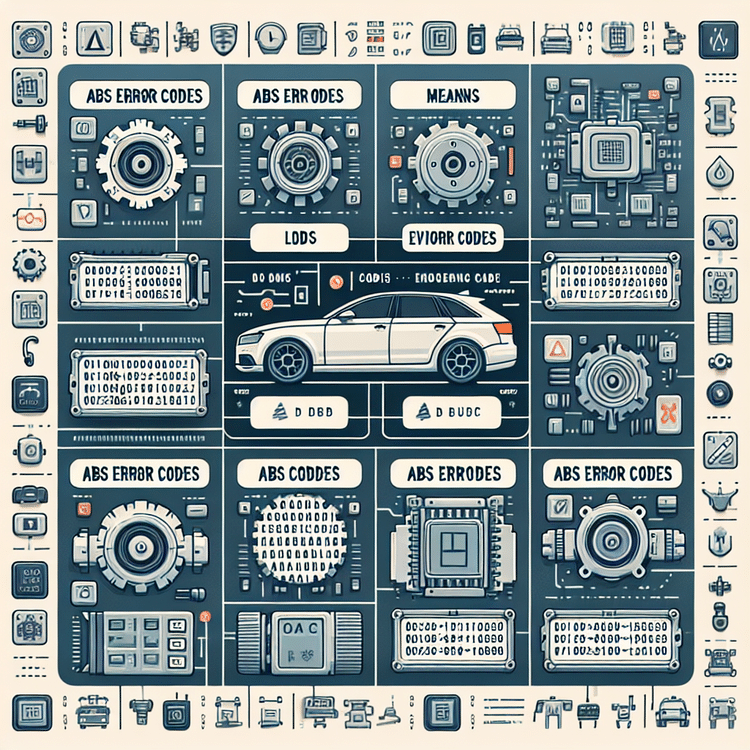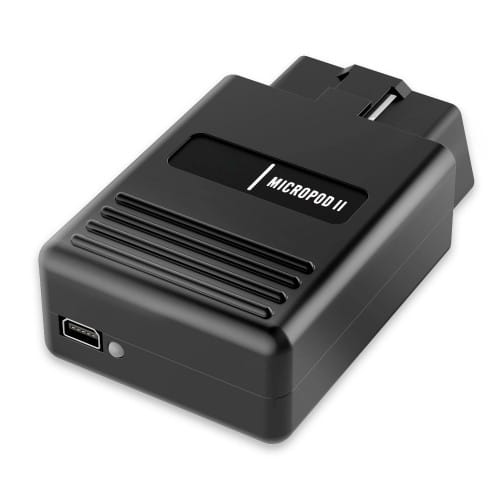Anti Lock Brake System Codes – Explained
Table of Content
- Introduction to the Anti-lock Brake System (ABS)
- Understanding the Anti-lock Brake System (ABS)
- Common ABS Error Codes
- Comprehensive ABS Code List (ABD Code List)
- Using ABS Flash Files for Diagnosis
- Step-by-Step Anti-lock Brake System Diagnosis
- ABS Troubleshooting Guide
- ABS Module Repair and Replacement
- Maintaining Your ABS System
- Conclusion and Call to Action
Introduction to the Anti-lock Brake System (ABS)

The Anti-lock Brake System (ABS) is a critical safety feature in modern vehicles, designed to prevent the wheels from locking up during braking, especially on slippery roads. This system enhances vehicle control and stability, making it an essential component of overall road safety.
Understanding anti lock brake system codes is crucial for diagnosing issues that may arise within the ABS. These codes, which the system generates when it detects a malfunction, provide vital information that can help vehicle owners and mechanics troubleshoot and rectify problems effectively. To navigate these codes, having a reliable ABS troubleshooting guide is invaluable.
The importance of the ABS can’t be overstated as it plays a key role in avoiding accidents by maintaining traction and preventing skids. Regular checks and understanding the signs of malfunction, indicated by error codes, empower vehicle owners to take proactive measures and ensure their safety on the road.
Understanding the Anti-lock Brake System (ABS)

The Anti-lock Brake System (ABS) is a vital safety feature in modern vehicles designed to prevent wheel lockup during braking. Understanding its key components is essential for diagnosing issues and ensuring optimal performance.
- Wheel Speed Sensors: These sensors monitor the speed of each wheel and relay this information to the ABS controller, which determines if a wheel is about to lock up.
- Valves: Integrated into the brake lines, the valves control the flow of brake fluid to each wheel, allowing for adjustments during braking situations.
- Hydraulic Pump: This pump restores the brake fluid pressure to the wheels when the ABS is activated, enabling the system to modulate braking pressure rapidly.
- Controller: The brain of the ABS, this electronic unit processes information from the wheel speed sensors and activates the valves to optimize braking performance.
ABS enhances vehicle safety by allowing drivers to maintain steering control during hard braking scenarios. This is particularly beneficial in slippery conditions, where traditional braking may lead to skidding.
However, like any system, ABS is prone to issues. Common anti-lock braking system issues include:
- Faulty wheel speed sensors
- Hydraulic pump failure
- Electrical issues with the ABS controller
- Low brake fluid levels affecting performance
For more insights on ABS technology, check out Boost Safety: Ford IDS for ABS & Traction Control and learn how it improves vehicle stability and braking. Additionally, you can explore the Ford PTS Guide: Benefits, Compatibility & FAQs for further understanding of diagnostic tools related to ABS.
Common ABS Error Codes
Understanding Anti-lock Brake System (ABS) error codes is crucial for diagnosing issues that can affect vehicle safety. These codes provide vital information that helps mechanics and car owners identify malfunctions within the ABS, ensuring prompt action can be taken to maintain safe braking performance.
Here are some common ABS error codes and their meanings:
- C0040: This code indicates a malfunction within the ABS module or the hydraulic system. It typically requires professional diagnosis to resolve.
- U0121: This code suggests a loss of communication with the ABS control module, which may be caused by wiring issues or a faulty module.
- C0035: This error signifies a problem with the wheel speed sensor, potentially affecting ABS operation.
- P1248: Indicates issues with the hydraulic brake assist, which can impact braking efficiency.
By interpreting these codes correctly, mechanics can quickly address the underlying issues. For a detailed understanding of specific codes like BMW 801C20 Error: Causes, Solutions & Diagnostic Tools, or checking out tools like the Launch X431 Tesla Airbag Repair Tool, can significantly streamline the troubleshooting process.
Comprehensive ABS Code List (ABD Code List)

ABS error codes are critical for diagnosing issues within the Anti-lock Brake System (ABS). Here are some common ABS codes along with their meanings and potential causes:
- Code C0035: This code indicates a problem with the left front wheel speed sensor. Potential causes include a faulty sensor, a damaged wiring harness, or issues with the ABS control module.
- Code C0040: This code signals a malfunction in the right front wheel speed sensor. Similar to C0035, potential issues involve sensor failure or wiring damage.
- Code C1257: This code suggests a problem with the hydraulic pump and its relay. Issues may arise from electrical problems or pump failure.
- Code C1210: This code reveals that there’s a fault in the ABS module communication line. Possible causes include faulty connections or a malfunctioning ABS module.
When interpreting these codes, it’s essential to use a reliable diagnostic tool. For advanced troubleshooting, consider checking out our ABS troubleshooting guide. It offers practical tips for resolving common ABS issues.
Additionally, if you’re keen on vehicle diagnostics, refer to our Comprehensive Volvo Fault Codes List: Troubleshooting & Solutions for a broader understanding of fault codes.
Using ABS Flash Files for Diagnosis

ABS flash files are essential tools used in diagnosing and repairing anti-lock brake system (ABS) issues. These files contain crucial programming data and configurations that allow technicians to communicate with the vehicle’s electronic control unit (ECU), enabling efficient troubleshooting and problem resolution.
To effectively use ABS flash files for diagnosis, follow these steps:
- Obtain the Correct Flash Files: Ensure you have the appropriate ABS flash files compatible with the vehicle model. For example, consider the ODIS Engineering Flash Files for Programming, which can enhance your diagnostic capabilities.
- Connect Diagnostic Tool: Use a diagnostic scanner capable of accessing ABS systems, ensuring it supports the necessary protocols.
- Download Flash Files: Access the flash files using the diagnostic software. Make sure to follow the software instructions for proper installation on the ECU.
- Run Diagnostic Tests: Perform diagnostic tests to read error codes and assess the ABS functionality. Use the results to guide your repairs or system reprogramming.
- Consult Resources: For ongoing support, refer to guides such as the ODIS Engineering Flashing Handbook for additional insights into using ABS flash files effectively.
Utilizing ABS flash files can significantly streamline the diagnosis of ABS-related issues, ultimately improving the vehicle’s braking system performance and safety.
Step-by-Step Anti-lock Brake System Diagnosis

Diagnosing issues with the Anti-lock Brake System (ABS) requires a systematic approach and the right tools. Follow this step-by-step guide to effectively diagnose ABS problems.
- Gather Necessary Tools: Obtain a diagnostic scanner compatible with your vehicle’s ABS. For precise measurements, use a multimeter and a code reader. Consider having a 2023 Autel MaxiPro MP808S-TS Bidirectional Diagnostic Scanner for comprehensive diagnostics.
- Initial Check: Start your diagnosis by checking for warning lights on the dashboard. An illuminated ABS light indicates a fault in the system.
- Scan for Trouble Codes: Connect your diagnostic scanner and retrieve any trouble codes (DTCs). Refer to the manufacturer’s manual or an online ABS troubleshooting guide to interpret these codes.
- Inspect Components: Visually inspect key ABS components including the wheel speed sensors, the ABS module, and the wiring. Check for any visible signs of wear or damage.
- Test Wheel Speed Sensors: Using a multimeter, check the output voltage of the wheel speed sensors while the wheel is turned. This can help identify a faulty sensor.
- Check Wiring and Connectors: Inspect the wiring and connectors for corrosion, fraying, or loose connections, which can disrupt signal transmission to the ABS module.
- Clear Codes and Test Drive: After making necessary repairs, clear the DTCs with your scanner and take the vehicle for a test drive. Monitor the ABS light to see if it illuminates again.
For further reading, check this post on Audi Brake Pads Warning Light: Meaning, Causes, and Quick Fixes and ensure your other braking components are in good condition.
ABS Troubleshooting Guide

The Anti-lock Braking System (ABS) is a crucial safety feature in modern vehicles. However, problems can arise, leading to the ABS light illuminating on your dashboard. Addressing these issues promptly is essential for maintaining your vehicle’s safety and performance.
Common symptoms of ABS problems include:
- ABS warning light is on.
- Brakes feel different (hard or soft).
- Vehicle skids or loses control during braking.
To troubleshoot ABS light problems, follow these detailed steps:
- Check the ABS fuse: Start by inspecting the ABS fuse in the fuse box. A blown fuse can disable the ABS.
- Scan for error codes: Use an OBD-II scanner to check for diagnostic trouble codes (DTCs). This can give insights into which components are malfunctioning. For more on using diagnostic devices, read this Comprehensive Guide to the VAS-5054A Diagnostic Device.
- Inspect wheel speed sensors: These sensors monitor wheel speed and communicate with the ABS system. Check for damage or dirt that could affect their function.
- Examine brake fluid levels: Low brake fluid levels can impact brake performance. Ensure that the reservoir is adequately filled.
- Check the ABS control module: If all else fails, the ABS control module may be the issue. Consult a professional for testing and replacement if needed.
ABS Module Repair and Replacement

The ABS module is a critical component of the anti-lock braking system, responsible for controlling the braking force to prevent wheel lockup during emergency braking situations. When the ABS module fails, it can lead to decreased braking efficiency and safety. Common signs indicating the need for repair include:
- Illumination of the ABS warning light on the dashboard.
- Increased stopping distances.
- Unusual sounds like grinding or humming when braking.
- Unresponsive brakes or inconsistent brake feedback.
If you notice any of these signs, it’s essential to address the issue promptly. Here is a step-by-step guide to repairing or replacing the ABS module:
- Diagnose the Issue: Use an ABS diagnostic tool to read fault codes and confirm ABS module failure.
- Disconnect the Battery: Always disconnect the vehicle’s battery before starting any repair work to ensure safety.
- Remove the ABS Module: Locate the ABS module, which is typically found near the master cylinder, and carefully detach it from its mounting bracket.
- Install the New Module: Replace with a new ABS module, making sure to securely attach all wires and plugs.
- Reconnect the Battery: Reconnect the battery and check for any error codes using the diagnostic tool to ensure proper installation.
For additional information on ABS troubleshooting, check out our guide on AHI Module Issues, which provides insights on diagnosing various module-related issues.
Maintaining Your ABS System

To ensure your Anti-lock Braking System (ABS) remains in optimal-condition, regular maintenance and preventive measures are essential. Here are some key practices:
- Regular Inspections: Frequently check brake fluid levels and the overall condition of the ABS components, including sensors and wiring. Additionally, make sure to inspect for any signs of wear or damage.
- Keep It Clean: Dirt and debris can interfere with ABS sensors. Clean the area around the wheel speed sensors to prevent false triggers and ensure proper system function.
- Monitor Warning Lights: If the ABS warning light on your dashboard illuminates, promptly diagnose the issue using an ABS troubleshooting guide to avoid further complications.
- Brake Fluid Changes: Regularly change the brake fluid as per your vehicle manufacturer’s recommendations to prevent moisture buildup that can harm the ABS.
In addition to these practices, utilizing diagnostic tools like the Ford PTS (Professional Technician System) can provide deeper insights into your ABS system’s status, enabling timely repairs and preventative care.
Conclusion and Call to Action
In this guide, we have explored the essential aspects of diagnosing and troubleshooting issues related to the anti lock brake system code. Understanding how to interpret these codes is critical for maintaining vehicle safety and performance. Regular ABS checks not only prevent system failures but also enhance overall driving safety.
Delayed diagnosis and repairs can lead to more significant, costly issues down the line. It is vital to act promptly when you encounter any signs of feedback from your ABS, such as warning lights on the dashboard. If you’re unsure about conducting these checks yourself, do not hesitate to consult a professional or rely on advanced tools available from Techroute66.
For more comprehensive resources, you can refer to our ABS troubleshooting guide, where you can find additional tips and tricks to ensure your braking system operates flawlessly.


